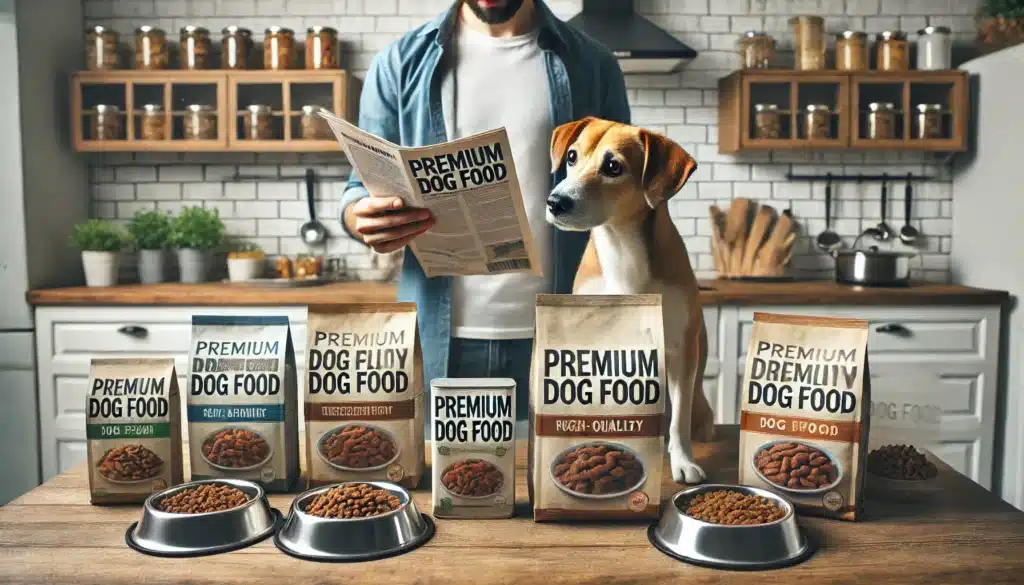Choosing the best dog food isn’t as simple as grabbing a colorful bag off the shelf. With endless options — grain-free, raw, natural, premium, vet-approved — it’s easy to feel overwhelmed. But the right dog food plays a major role in your pet’s health, energy, and even behavior.
In this guide, you’ll learn how to choose the best dog food based on your dog’s breed, age, size, health needs, and lifestyle. We’ll cover ingredient quality, label reading, and common marketing traps to avoid — so you can make informed, confident decisions for your furry friend.
Why the Right Food Matters
A balanced, high-quality diet impacts your dog’s:
- Weight and muscle development
- Coat condition and shedding
- Digestion and stool quality
- Immune system function
- Energy levels and behavior
- Dental health and longevity
Feeding the right food now can help prevent vet bills later.
Step 1: Know Your Dog’s Nutritional Needs
Each dog has different dietary requirements depending on:
🐾 Life Stage
- Puppies: Need extra calories, protein, and calcium for growth
- Adults: Require maintenance formulas with balanced nutrients
- Seniors: Often need fewer calories, joint support, and easy-to-digest ingredients
🐶 Size
- Small breeds: Faster metabolism — need nutrient-dense kibble
- Large breeds: Need controlled calcium and protein for bone health
- Giant breeds: May require joint support and slow-growth formulas
🏋️♂️ Activity Level
- Active dogs (working, herding, agility) need more calories and protein
- Couch potatoes need lower-calorie options to avoid obesity
🩺 Health Conditions
Talk to your vet if your dog has:
- Allergies or food sensitivities
- Digestive issues
- Skin problems
- Kidney, liver, or joint conditions
- Obesity or underweight
Prescription or specialized diets may be recommended.
Step 2: Understand Labels and Ingredients
Dog food marketing can be misleading. Learn how to decode the label:
🧾 1. Look for “Complete and Balanced”
Check for the AAFCO (Association of American Feed Control Officials) statement. It ensures the food meets minimum nutritional standards.
Look for:
✔️ “Formulated to meet the nutritional levels established by AAFCO…”
✔️ The appropriate life stage (growth, maintenance, or all life stages)
🥩 2. First Ingredient Matters
The first ingredient should be a named protein like “chicken,” “beef,” or “salmon” — not “meat by-product” or “animal meal.”
Avoid:
- “Meat by-product”
- “Animal digest”
- “Corn” or “soy” as the first ingredient
- Artificial colors or sweeteners
📦 3. Ingredient List Order
Ingredients are listed by weight. That means high-moisture items like chicken will appear first, even if there’s more grain by volume.
Tip: Look for whole foods throughout the list — real meat, vegetables, and grains.
💡 4. Guaranteed Analysis
This panel tells you:
- Protein %
- Fat %
- Fiber %
- Moisture %
Compare this across brands and types. Puppies may need 22–32% protein; adult dogs, 18–25%.
🧠 5. Avoid Buzzwords Without Substance
Terms like “natural,” “premium,” or “holistic” aren’t regulated and don’t guarantee quality.
Instead, focus on:
- Transparency of ingredients
- Source of protein and nutrients
- Reputation and recall history of the brand
Step 3: Choose the Right Food Type
There are many types of dog food — each with pros and cons.
🥣 Dry Food (Kibble)
- Affordable, easy to store
- Helps reduce plaque
- Long shelf life
- Watch for low-quality fillers
🥫 Wet Food (Canned)
- Higher moisture content
- Tasty for picky eaters
- More expensive
- Can contribute to dental plaque
🍗 Raw or Freeze-Dried
- Closer to ancestral diet
- High protein
- Must be handled carefully
- Risk of contamination if not prepared/stored correctly
🍽️ Fresh or Homemade
- Full control over ingredients
- Requires proper formulation to be complete and balanced
- Time-consuming and costly
- Vet or canine nutritionist guidance is essential
Step 4: Try, Observe, and Adjust
No matter how premium the food, it might not suit your dog’s unique system. After switching, observe:
- Coat shine and skin condition
- Energy levels and mood
- Stool consistency (firm, brown, easy to pick up)
- Appetite and digestion
- Allergic reactions (itching, licking, gas)
Transition gradually over 5–7 days: mix old and new food, increasing the new portion slowly.
Bonus Tips: Making the Smartest Choice
- Choose brands that do feeding trials and publish nutritional information
- Avoid grain-free unless advised by a vet (linked to heart disease in some dogs)
- Consider rotational feeding — switching protein sources every few months
- Buy from reputable suppliers with proper storage conditions
- Check expiration dates and store food in airtight containers
Final Thoughts: You Know Best — With the Right Info
Choosing the best dog food doesn’t require a veterinary degree — just attention, care, and a little knowledge. Your dog’s food is the foundation of their health and happiness, and you’re the best advocate for making smart decisions.
Take your time, read labels carefully, consult your vet when needed — and remember: what you put in your dog’s bowl is an act of love.







